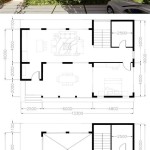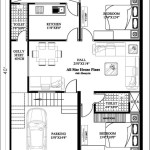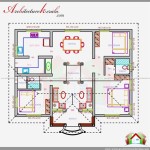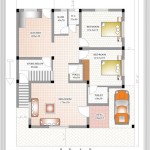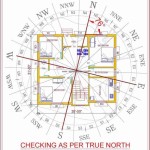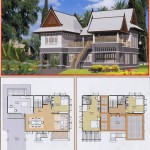Guinea Pig Cage Plans
Building a custom cage for guinea pigs offers several advantages, including cost savings, customization to fit available space, and the ability to create an environment perfectly suited to the animals' needs. Planning is crucial for a successful project, and understanding the key factors involved ensures a safe and enriching habitat.
One of the most important considerations is size. Guinea pigs require ample space to exercise and explore. The minimum recommended cage size varies depending on the number of guinea pigs housed. Resources like the Humane Society of the United States provide guidelines for appropriate cage dimensions based on the number of animals. Larger cages are always preferable, allowing for more complex enrichment and reducing the frequency of cleaning.
Material selection is another vital aspect of planning. Common materials for DIY cages include wire mesh, corrugated plastic (Coroplast), and wood. Wire mesh provides ventilation and visibility. Coroplast is a durable, waterproof material ideal for the base and sides of the cage. Wood can be used for framing and supporting structures but should be untreated and safe for guinea pigs. Avoid using cedar or pine, as these woods release aromatic oils that can be harmful to their respiratory systems.
The design of the cage should prioritize ease of cleaning and maintenance. A removable base or tray simplifies the process of removing soiled bedding and cleaning the cage floor. Smooth, non-porous surfaces are easier to disinfect and prevent the buildup of bacteria and parasites. Consider incorporating features like ramps and hidey houses for enrichment, ensuring they are securely attached and safe for the guinea pigs to use.
Several different cage styles can be constructed depending on individual needs and preferences. C&C cages (cubes and coroplast) are a popular choice due to their modularity and affordability. These cages are constructed using wire storage cubes connected together and lined with Coroplast. MidWest cages are another option, often used as a base and modified with Coroplast to increase the floor space. Custom-built wooden cages offer a more permanent and aesthetically pleasing option but require more advanced carpentry skills.
When drawing up plans, accurate measurements are essential. Precisely calculating the dimensions of the cage ensures all components fit together correctly and provides the necessary space for the guinea pigs. Sketching the design on paper or using a computer-aided design (CAD) program can help visualize the final product and identify potential issues before construction begins. Include measurements for the base, sides, and any additional features like lofts or ramps.
Ventilation is a key consideration in guinea pig cage design. Adequate airflow prevents the buildup of ammonia from urine, which can cause respiratory problems. Wire mesh sides provide good ventilation, but ensure the cage is not placed in drafty locations. Avoid fully enclosed spaces, as these can trap moisture and lead to poor air quality.
Cost is another factor to consider when planning a DIY guinea pig cage. While building a cage can be more cost-effective than purchasing a pre-made cage, it's important to factor in the cost of all the materials. Compare prices from different suppliers and consider using recycled or repurposed materials where possible. Factor in the cost of bedding, food bowls, water bottles, and other accessories.
Accessibility for cleaning and interaction with the guinea pigs is also important. The cage should be positioned in a location that allows easy access for daily cleaning and feeding. Consider the height of the cage, ensuring it is comfortable to reach in and interact with the guinea pigs without straining. A removable top or large access doors can facilitate cleaning and interaction.
Researching different guinea pig cage plans online or in library resources can provide inspiration and guidance. Numerous websites and forums dedicated to guinea pig care offer detailed instructions and examples of DIY cage designs. Observing other successful builds can provide valuable insights and help avoid common pitfalls.
Safety should always be the top priority when designing and building a guinea pig cage. Ensure all materials are non-toxic and safe for guinea pigs. Avoid sharp edges or protrusions that could cause injury. Securely attach all components to prevent collapse or escape. Regularly inspect the cage for any signs of damage or wear and tear and make necessary repairs promptly.
Building a guinea pig cage is a rewarding project that allows for customization and cost savings. Careful planning, including consideration of size, materials, ventilation, and safety, is essential for creating a comfortable and enriching environment for these small pets. By incorporating these elements, owners can construct a habitat that promotes the health and well-being of their guinea pigs.

Cage Designs Plans Guinea Pig Cages

How To Build A Guinea Pig Hutch Buildeazy

Build A Guinea Pig Cage With Easy Cleaning Projects Kids 4 Steps Instructables

Two Tier Rabbit Guinea Pig Hutch Plans Assembly Instructions Comes With Cut List And Step By Guide

How To Build A Guinea Pig Hutch Buildeazy

147 Deluxe 2 Y Rabbit Hutch Cage With Under Run Buy Small Animal Supplies Casas Para Cobayas Mascotas Gallinas
Cage Designs Plans Guinea Pig Cages

Diy And C Cages For Guinea Pigs Build Your Own Squeak Dreams

How To Build A Guinea Pig Hutch Buildeazy

Make Your Own Guinea Pig Cage Tips Diy Hutch Pet Pigs

